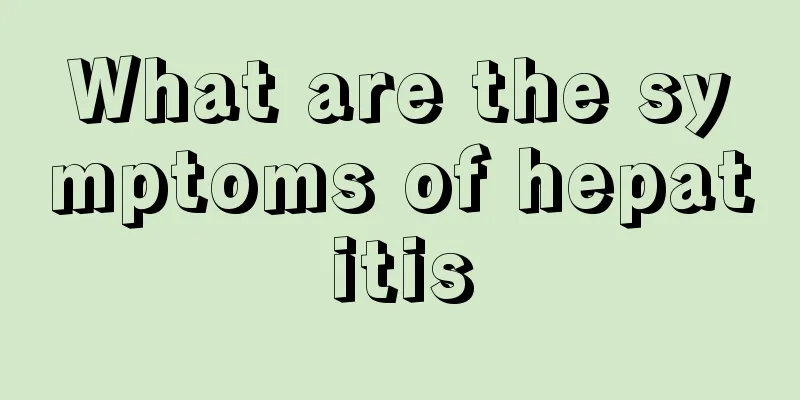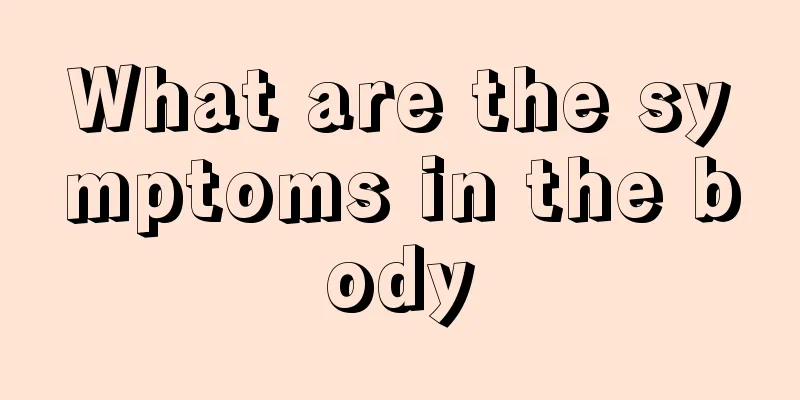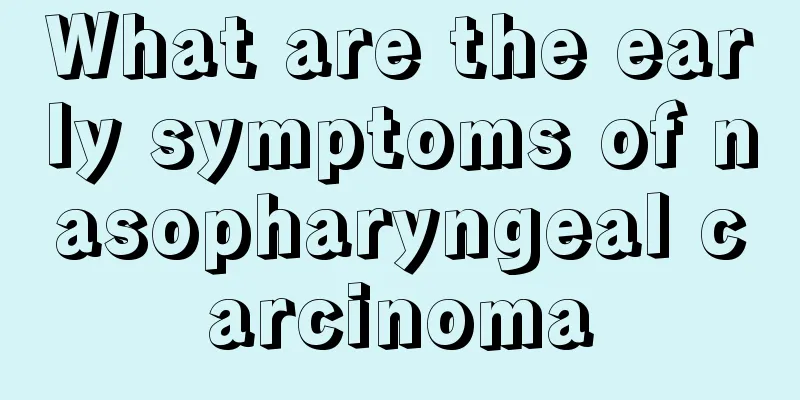What are the symptoms of hepatitis

|
Hepatitis is a highly harmful infectious disease that is transmitted through contact in daily life, and the hepatitis virus has a certain incubation period. If there is no antibody in the body and the physical condition is poor, there is a risk of contracting hepatitis. There are several types of hepatitis in Western medicine, and their symptoms and treatments are very different. Let us now understand what the symptoms of hepatitis are. Hepatitis can generally be divided into several different types: according to the cause, it can be divided into viral hepatitis, drug-induced hepatitis, alcoholic hepatitis, toxic hepatitis, etc.; according to the length of the disease course, it can be divided into acute hepatitis, chronic hepatitis, etc.; according to the severity of the disease, chronic hepatitis can be divided into mild hepatitis, moderate hepatitis, severe hepatitis, etc. Early symptoms after acute hepatitis infection: Patients recently experience low fever, general fatigue, loss of appetite, accompanied by nausea, vomiting, aversion to greasy food, discomfort in the liver area and yellow urine, which do not improve after rest. 1. Acute icteric hepatitis (1) Pre-jaundice: The disease usually starts slowly, with mild fever or no fever, and joint pain and rash are common. Common symptoms include fatigue, loss of appetite, aversion to greasy foods, nausea, vomiting, and sometimes abdominal pain and diarrhea. This phase lasts an average of 5-7 days. (2) Jaundice stage: Fever subsides, subjective symptoms are slightly alleviated, jaundice appears on the sclera and skin, and reaches a peak within a few days to 3 weeks. Dark yellow urine may cause transient lighter stools. Pain in the liver area, enlarged liver, soft texture, tenderness and percussion pain. This phase lasts 2-6 days. (3) Recovery period: The patient's jaundice gradually decreases and disappears, the stool color returns to normal, the skin itching disappears, the appetite improves, the physical strength recovers, the gastrointestinal symptoms are alleviated, the jaundice disappears, and the liver function returns to normal. This period is generally 1-2 months. 2. Acute anicteric hepatitis This type is more common and has milder symptoms, including general fatigue, loss of appetite, nausea, and abdominal distension. Physical signs include enlarged liver, soft texture, tenderness and percussion pain. This type of hepatitis has mild symptoms and is often overlooked. The course of the disease is about 2-3 months. 3. Acute severe hepatitis Also known as fulminant hepatitis. The clinical features are acute onset, with impaired consciousness, bleeding, jaundice and liver shrinkage within 10 days. The duration of illness does not exceed 3 weeks. The early clinical manifestations of fulminant hepatitis are similar to those of acute icteric hepatitis, but the disease progresses rapidly. Therefore, if the following symptoms appear, a severe diagnosis should be considered. |
<<: Can osteoarthritis be cured?
>>: What causes back pain? Pay attention to back pain
Recommend
Pathological classification of ovarian cancer
Pathological classification of ovarian cancer: Th...
Which diseases are easily confused with cervical cancer?
In recent years, cervical cancer has become one o...
Chicken breast correction belt
Pectus pigeonae is a relatively common deformity....
What is the best way to treat thyroiditis?
Thyroiditis will endanger our health after it occ...
What to do if Fengyoujing gets into your eyes
Menthol is extracted from mint and combined with ...
A type of needle hole on the body turns out to be a deadly cancer
There are many people suffering from sty in our d...
What are the examinations that need to be done before lung cancer surgery? Four examinations before lung cancer surgery are must-do items
The air we breathe is now very polluted, mainly b...
Throat is bleeding
Everyone should also pay attention to protecting ...
Instructions for Isatis Root Granules
When using any product, there are some instructio...
What to do if the lower right side of the stomach hurts
For those who suffer from pain in the lower right...
What are the nutritional values of egg yolk mud
When the baby at home is 8 months old, you can st...
What is the method to eliminate burn scars
It is very easy to get skin scars after a burn, a...
What does anal sex feel like
The term anal sex may sound embarrassing, but it ...
Does eating grapefruit have a diuretic effect?
Generally speaking, any fruit with a relatively h...
What to do if there are small fleshy bumps on the back of the tongue
If there is a problem with your tongue, it is eas...









